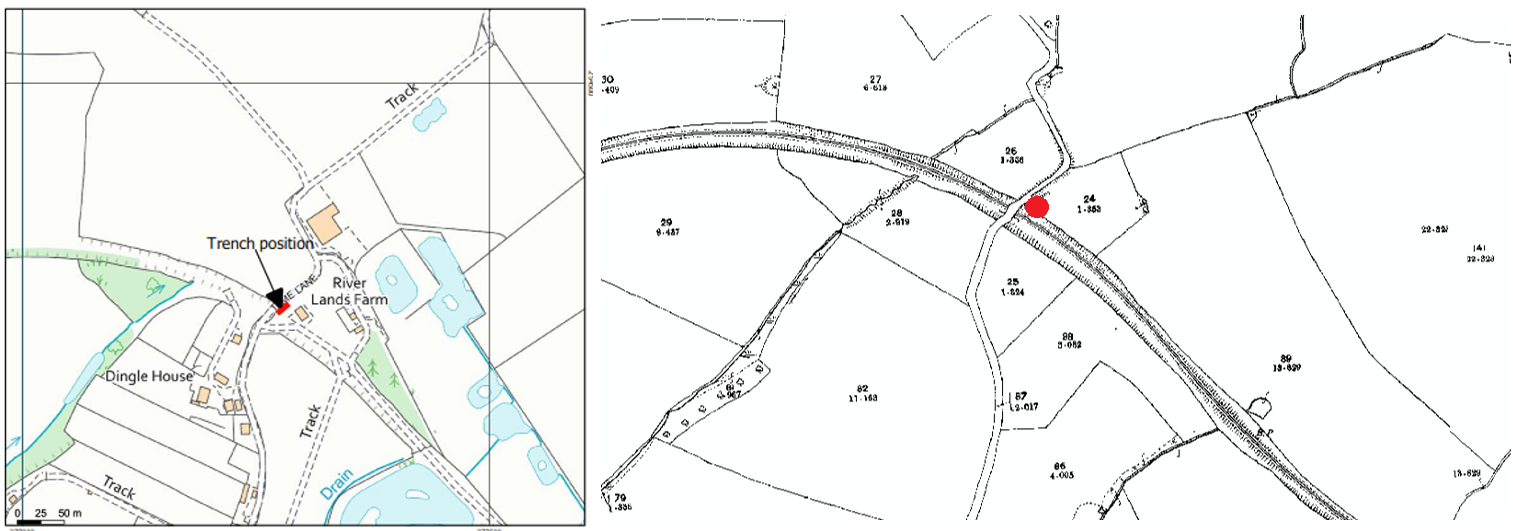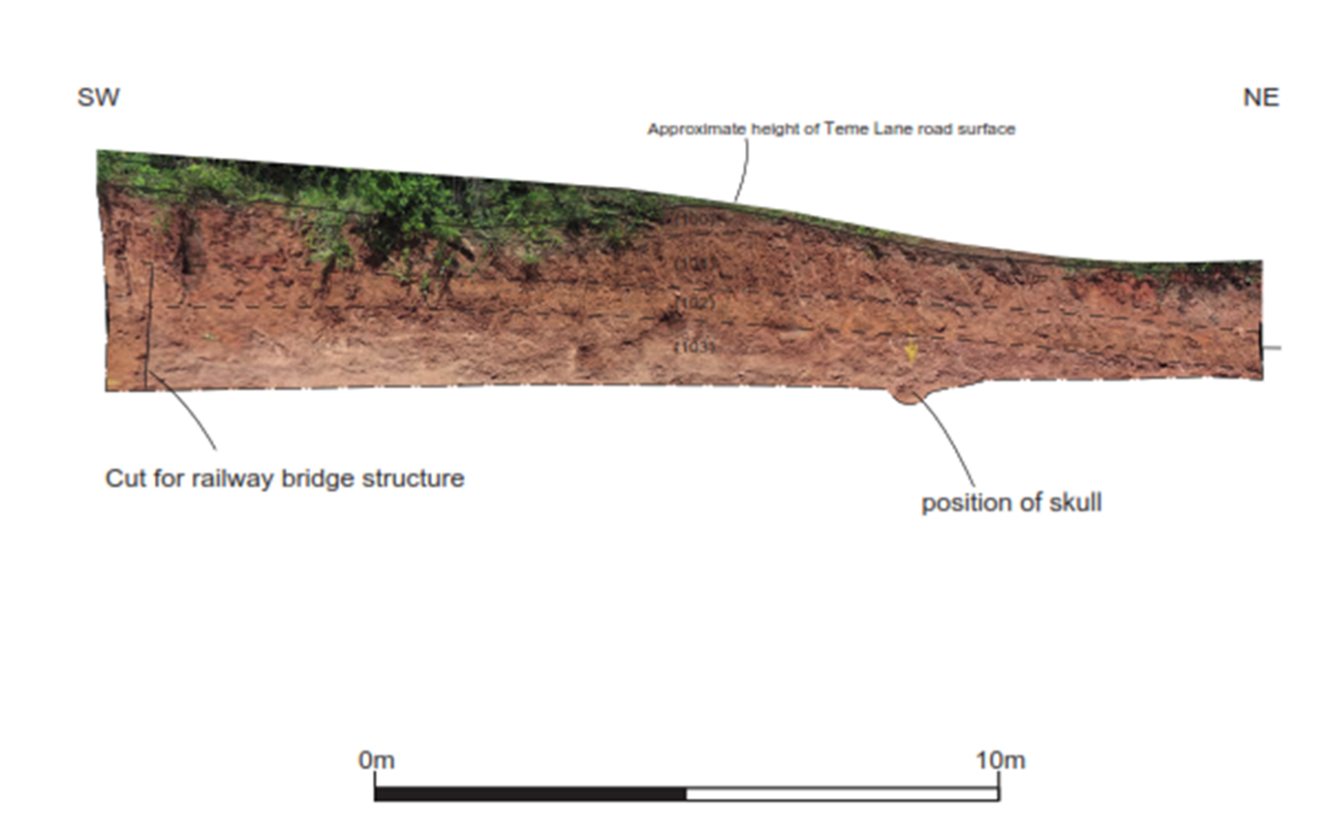Body on the Bromyard Line 1 – The Discovery
- 15th May 2024
This is the first in a series of five posts exploring the story behind the human skeleton found buried within an embankment of the Worcester, Bromyard and Leominster railway line in 2021. Over this mini-series we explore the discovery, and what we have learnt through the archaeological excavation, scientific analyses and documentary research.
In the summer of 2021, excavations for a housing development began close to Riverlands Farm in Leigh, to the west of Worcester. The former Worcester to Bromyard railway line once curved across the site. Built in the 1860s, the line eventually closed in the 1960s, and by 2021 all that remained was the earthwork of the former embankment that took a narrow lane up and over the railway.

the location of the burial in 2021, and how the site looked when the Worcester to Bromyard Line was still in use (1902 Ordnance Survey)
In July 2021, a machine driver was busy removing the remains of the embankment in order to start construction. He pulled the excavator bucket back, and with the soil, the remains of a human skeleton came out the bank. He stopped excavating immediately and the construction manager called the police. The police notified Aidan Smyth, the Wychavon and Malvern Hills Archaeology and Planning Officer as the body was clearly not recent.
When the archaeologists from our field team (Worcestershire Archaeology) arrived on site, only the feet and bottom of the lower leg bones survived in-situ. Unfortunately, the rest of the skeleton had been disturbed by the machine. The archaeologists recorded the feet bones in-situ and collected up the rest of the skeleton. They looked carefully for any other finds that might have originally been associated with the human remains, such as buttons, shoes or other objects. No associated finds were recovered.
There was no evidence of a grave cut and the body appeared to have been placed on the surface as the embankment was being constructed. The deposits above and below the remains were the same, and consistent with the material that formed the ramp or embankment for the road, as it approached the bridge over the railway line. This indicates that the inhumation was most likely buried during the construction of the road bridge over the railway, rather than dug in later.
The circumstances of their death were not clear at this stage. Were they directly involved in the construction of the railway, or were the railway works simply used as a convenient place to dispose of a body? Given the disturbance we cannot be sure that there was no grave cut. The site was badly damaged by the machine, so although it appeared that the body was placed there during construction, it is possible that it is a later inhumation. Grave cuts are notoriously difficult to discern because the hole is dug and then almost immediately backfilled with the same material.

Cross section of the embankment showing location of the burial (Worcestershire Archaeology)
In November 2022, Worcestershire Archaeological Society, Wychavon District Council and Worcestershire County Council agreed to jointly fund a project to investigate the origins of the skeletal remains. Museums Worcestershire has supported the project through housing the human remains for up to two years without charging the usual deposition and curation costs. After 2 years, in the autumn of 2024, the remains will be reburied somewhere more appropriate.
The remains were sent away for a full osteological assessment of the skeleton to establish the age at death, the sex of the skeleton, their stature and any illness or injuries that have left a mark on the skeleton. We also took samples of the bones and teeth for isotopic analysis and DNA sequencing. Stable isotopes are chemical signatures in the bone that relate to the location and the environment someone grew up in and later lived in, as well as the diet they ate. DNA can tell us about the genetic affinity of an individual, and whether they might have been genetically related to a particular population.
We had a working hypothesis that the body was one of the men constructing the railway line, who had died on the job, either through accident or illness. Stripped of his boots (because evidence of those would have survived), he was then dumped into the bank as it was built. We were, however, open to other possibilities. The embankment may have been a convenient place to hide an unrelated body, or it could be a much later illicit burial.
What would the research reveal? Could we find out more about this person and how he or she ended up in the bank? Find out in the following blogs: Body On the Bromyard Line Blog 2
Information in this post is taken from:
Cornah, T. Vaughan, T 2022. Archaeological watching brief at River Lands Farm, Teme Lane, Leigh, Worcestershire. Worcestershire Archaeology unpublished report.
Post a Comment